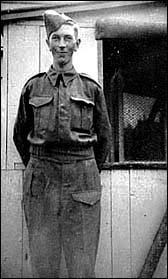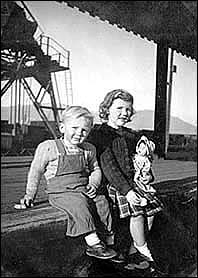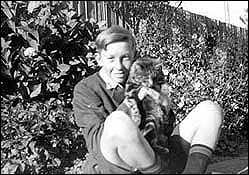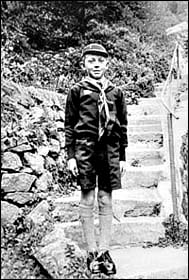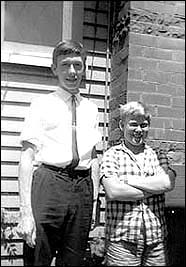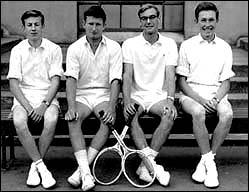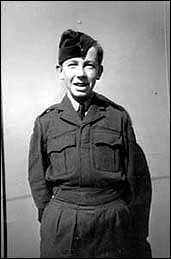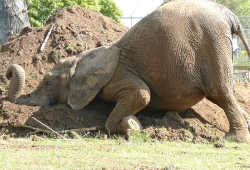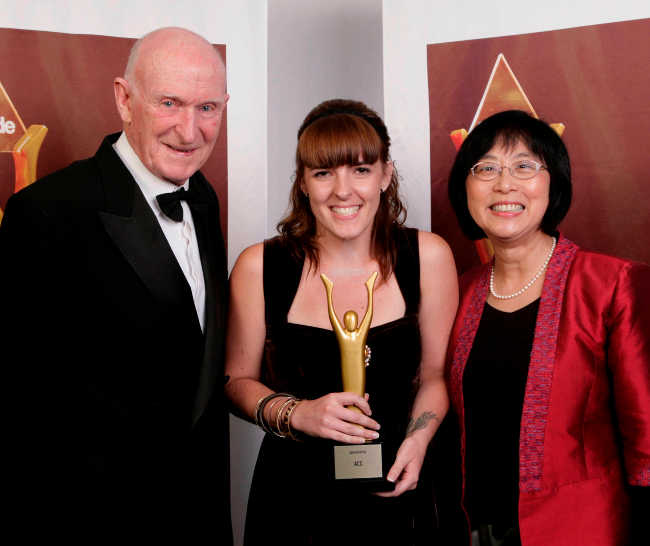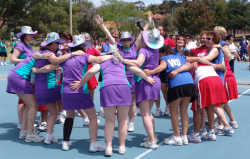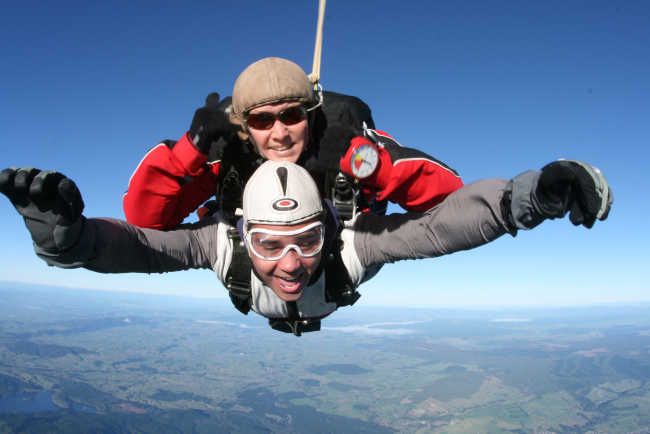Formative influences Dorothy – 28/03/03
The articles on the Dangers of Electromagnetic Radiation, based on interviews with Dr Neil Cherry, have been among the most widely read articles in NZine. Since November 2001 when Dr Cherry found that he had a terminal illness, motor neurone disease, I have interviewed him about his early family life and his work as a teacher, scientist, politician and worker for peace. Originally this biography was to be given only to the family but Neil wished it to reach a wider readership. Because of his illness he had limited time to talk about his full life, and chose not to include family material which would be well known to his wife Gae and his daughters Jo and Karla. He chose to speak mainly about what may not have been known to his daughters in particular.
A summary of the story will be published in instalments in NZine.
Formative influences Neil’s early life Neil’s life began in Christchurch in September, 1946. His forebears were hardworking, practical people, and his Palmer forebears arrived in Canterbury on the “Cressey”, one of the first four ships to bring settlers from England to Canterbury. This means that Neil is a true Cantabrian and his life and work have included active concern for the welfare of the people of Canterbury.
His parents Neil’s parents, James Conrad Cherry and Mona Hartley, met when both were working in Aulsebrooks biscuit firm, and married in 1940.
Neil’s father involved in wireless detection, public transport and road safety During World War II his father enlisted in the army and was posted as a Sergeant in the Coastal Defence Force at Godley Head overlooking the Lyttelton Harbour.
|
|
| James Cherry, Neil’s father, in uniform |
He was a very practical man and was skilled in the wireless detection system which we now call radar. They used the wireless system to try to detect any foreign ships and had large guns pointing out over the harbour from Godley Head and Battery Point. He used to walk over to Sumner and catch a tram to visit his home once or twice a week.
After the war he worked for the Christchurch City Council, first as a tram driver, and then a bus driver in diesel and later trolley buses. Next he worked for the Traffic Department of the Council and then moved to the Ministry of Transport. Public road safety had always interested him and he became a road traffic instructor. He visited schools teaching children about road safety and checking the safety of their bicycles. He became the Regional Chief Road Traffic Instructor for the central area of New Zealand.
He was also involved in Do It Yourself projects, including building his own house in Earl Street in Opawa. Neil as a youngster worked with his father on building projects.
Early education on road safety Neil remembers that when he was about two or three years old his father made him a wooden pedal car, which he really enjoyed. He recalls that they were living in a cul de sac and to visit his friend who lived opposite he had to pedal his car right round the end of the street on the footpath until he came to the house opposite theirs. His father’s concern about road safety meant that he was not allowed to drive a pedal car across the road.
He enjoyed playing with his sister Ngaire, and they are pictured here on a visit to Lyttelton, the port of Christchurch.
|
|
| Neil and his sister Ngaire on an outing to Lyttelton |
Eleven primary schools, thirteen changes of school When he was four years old his parents separated, although they tried coming back together three times. Neil lived with his mother except in holidays. She worked as a housekeeper, sometimes for farmers. This involved moving to different jobs every few months. Neil went to a Christchurch kindergarten, but then his mother got a new job in Hanmer Springs. Neil started school in Hanmer Springs. In all he attended eleven different primary schools. He changed schools thirteen times. Three times he was enrolled at South Brighton School each time his parents tried living together again. Each time he returned there he had the same woman teacher, which gave his schooling some continuity.
His parents were divorced when Neil was about nine or ten.
Looking back at the number of moves he experienced Neil comments on how he coped with it all.
“I was actually very shy back then so I must have created a protection approach because I had to go to so many different schools and I think it produced an emotional protection reaction. We went from house to house and my mother went through all sorts of difficulties and I had to cope with all of that, and with the three separations and finally the divorce of my parents.
“I don’t look back with a negative view to that time. Maybe I have disguised it, but all the time my mother gave me a positive attitude, which was probably the main thing. She always was very loving and caring and positive about me and my father. All this gave me a complex emotional background in that I covered up things but I coped with a lot of stress by dismissing it.”
His affection for his cat was one outlet during times of stress.
|
|
| Neil and Whiskers |
While living in Lyttelton Neil attended Lyttelton Main School. He took a great interest in the activities in the port. At that time the Antarctic Programme was stationed in Lyttelton and he could watch the US Coastguard vessels, icebreakers and helicopters. He was delighted when he was given a sailor’s hat. He joined the local Cub group and enjoyed the activities and wearing the Cub uniform.
|
|
| Neil in his Cub uniform |
When asked whether his childhood experiences fitted him to be a politician and scientist Neil replied: “In terms of politics having had a very diverse background and grown up in a low-income situation with my mother being effectively a sole parent, I had a background which helped me to understand a wide range of situations, including living in a solo parent family. I understood the challenges for people who had to earn their living from physical effort as I was surrounded by people who worked hard physically.”
Conservation values taught early Like the majority of families at that time the family was in many ways self-supporting with most of the vegetables coming from the home garden and eggs and chicken from the family fowlhouse, water from their own well and firewood gathered locally. His mother sewed his clothes while he was young and knitted socks giving him a handmade pair for his birthday for many years.
Christmas celebrations Christmas was celebrated with his grandparents. A strong memory of Christmas Day in 1953 was news of the Tangiwai disaster in which the Wellington to Auckland night express plunged into the Wangaehu Stream with the loss of 151 lives.
Trips to the pictures First Neil was employed selling ice creams in the picture theatre in Edgeware Road. Later riding his bike to town to the pictures at the children’s club at the Crystal Palace picture theatre in Cathedral Square was a regular Saturday morning outing, costing 6d in the front seats, 9d at the back and 1/3 upstairs.
Television In the 1960s Neil’s grandfather won in a raffle a black and white television set, one of the first in Christchurch. The neighbours used to visit to see this marvellous new entertainment. Neil’s family used to visit too and Neil remembers how amazing it was to see the moving faces and actually see the people you had heard on the radio reading the news.
Time with his father Neil enjoyed staying with his father, doing woodwork and spending time at the beach.
He also remembers being in the car with him in Bridge Street, South Brighton, when a car tore past them in a very dangerous manner. As he was a traffic officer Neil’s father chased the offending car, stopped it and gave the driver a warning that a repeat offence would mean a ticket – all with Neil in the car. A memorable time.
At school when other children bragged about their father being a policeman Neil was proud to be able to retort that his father was a traffic officer.
It was great that Mr Cherry now drove a car with a red light like a cherry on top!
Neil’s family circle widens His parents were divorced when Neil was about nine or ten.
Later his mother remarried and the family lived in St Albans. Her husband was Stephen Peters and Neil gained a step-brother, Simon, about four years younger than he was.
|
|
| Neil in secondary school uniform and Simon |
Neil’s memories of toys are mostly concerned with playing with balls and sticks with his friends or his brother, or when he had to be indoors playing Snake and Ladders, dominoes, Monopoly and card games.
His father remarried and his wife, Peggy, had a daughter Jenny, so Neil gained a step sister. Neil went to their house most weekends. His father, Peggy and Jenny went to services at the Congregational Church in Worcester Street and Neil often went with them. He played with Jenny on Sunday afternoons and evenings. His father showed movies in his home-made studio.
As they grew up he saw less of Jenny. His father and Peggy moved to Nelson and lived in Rocks Road where the sight of his traffic department car parked outside slowed the traffic! Jenny went to secondary school in Nelson.
Later Neil had a holiday job working for the Nelson City Council on road works and the rubbish collection. Peggy insisted that he have a swim on his way home so that he did not come home dirty from his work.
Intermediate school years When the family lived in St Albans Neil attended St Albans school and Heaton Intermediate. When they moved to Opawa on the other side of Christchurch Neil decided that as he was unwilling to change schools again, he would ride his bike across town every day, summer and winter for eighteen months. He enjoyed the maths classes, the sport and woodwork at Heaton and recalls without affection ‘the murder house’ – the school dental clinic. He has a vivid memory of the high number of hard frosts and the slippery surfaces at the edge of the road where the frost made the loose gravel slippery. Weather records show that there were far more hard frosts in the 1950s before the impact of global warming.
At primary school there had been uniforms but wearing them was optional. At Heaton Intermediate School everyone wore uniform and the same applied to pupils at the Technical College.
Church attendance Neil’s mother was a Baptist, so he was involved in Colombo St, then St Albans, Baptist churches, and when he was at High School and living in Opawa he belonged to the Opawa Baptist Church.
Secondary schooldays Choosing a school and a course of study Partly because his mother was late with the enrolment Neil went to the Christchurch Technical College. He had won an Art Scholarship from Heaton Intermediate School, but he did not specialise in it once he went to secondary school. With his background he enrolled for a course specialising in woodwork, technical drawing, and cabinet making.
Activities to build leadership skills He was very involved in sport. He played hockey in winter and captained his team, and in summer he trained for life saving in which he holds a number of Royal Life Saving Society awards.
|
|
| The school tennis team 1964, Neil on the right. |
He was very much involved in cadets, became a Squadron Warrant Officer and then the RSM, was a prefect and then head prefect for two years. He was in a position to be a very strong leader of the school.
He was very happy at school and when he was head prefect they used to call him “Smile Boy” because he always walked across the playground smiling. He was involved in a lot of positive activities and his memory of his high school years is Boys’ Brigade, church, Cadets, and sport.
He was interested in the military, but also very much involved in the church and its youth groups, and in Boys’ Brigade. He was enrolled in the Air Force Cadets (Air Training Corps, [ATC]) and on the evenings when there was training he would ride his bike to the city where he was picked up by Air Force transport to be taken to Wigram. Most holidays he went to Burnham, the army base, and to Woodbourne, the Air Force base, to the cadet camps. He was also top of his class for the practical and academic subjects, so his time management must have been excellent.
|
|
| Neil in Cadet uniform |
After passing School Certificate in woodwork, technical drawing, mechanics, English and mathematics, he then took up science in the sixth and seventh form (called Upper and Lower Sixth form at that time.) Because he was behind in physics and chemistry he went to night classes at the Technical College, and caught up in those subjects. He gained such a good knowledge of these subjects that he did very well in his first year at the University of Canterbury and was immediately offered a place in the BSc Honours Course in Physics.
Deciding on a career At the end of his five years at school he had a career choice because he had been involved in Cadets both at school where he became RSM and in the Air Force Cadets. He applied to the Air Force for pilot training, and to the Government for a teachers’ studentship – a scheme which allowed students funding to study for a degree, but bonded them to secondary teaching for the same number of years. He was offered both, and he had quite a conflict. At age seven his dream was to be a meteorologist or an astronomer, so his interest in the weather led him to flying. However this conflicted with his Christian philosophy.
Neil relates two incidents in which his Christian beliefs were put to the test. “This was brought to a head in the third form. I was quite big for my age and a smaller fifth former attacked me in the playground, and started to bash me, and there was a rumble as we used to call it in those days – a fight. A crowd of kids came around, and the prefects and the teachers, and they grabbed us and took us off to the principal. The response to a fight was suspension, and possibly exclusion from the school. I was crying and embarrassed.
“The principal, Mr Wise, said ‘You were fighting’. I said ‘No, I wasn’t’ . ‘But you were in a fight?’ ‘Yes, I was’. ‘So you were fighting.’ ‘No, I wasn’t.’
“Mr Wise then turned to the other guy and said, ‘What was the fight about?’ and the other guy said, ‘He wouldn’t hit me.’
“In church we had been told, ‘Turn the other cheek,’ so I did, and he hit it, and I turned it again and he hit it, so that was my Christian philosophy – pacifism actually – ‘Turn the other cheek.’
“Three years later when I was in the sixth form and a head prefect had to be appointed there was a split between engineering and building, so the principal remembered that occasion and appointed me head prefect because of the principles that I had expressed then.
“That event I mention now because as I came to look at my future career I was thinking, ‘Fighting and war or education’. It seemed much more appropriate as a Christian to go into education than to become a fighter pilot.”
Also while he was still at school he became a sergeant in the Town Squadron of the Air Training Corps. Neil tells of a fight that took place at that time.
“One night we came back into town and three young army lads came out of the pub over the road and started to attack one of the guys in Air Force uniform – one of our newer recruits. I was the sergeant so I charged down and got between them. This was what I had to do as an NCO and as a Christian. The three men, who we later found out were soldiers, started to attack me and I was yelling out to the other guys, ‘You go that way and find the police.’ The publican came across and joined in and helped fight off the soldiers. The police came along and arrested them.
“I had to say to the teacher that I had to go to court. He fired back, ‘What’ve you done?’ ‘I’ve got to be a witness.’ I had to go into court as a witness and say that these guys had attacked another cadet and that there was no provocation. They were soldiers who didn’t like the Air Force.
“My pacifist background comes from my Baptist training of turning the other cheek.”
For more information about Neil Cherry’s scientific research go to his website www.neilcherry.com

